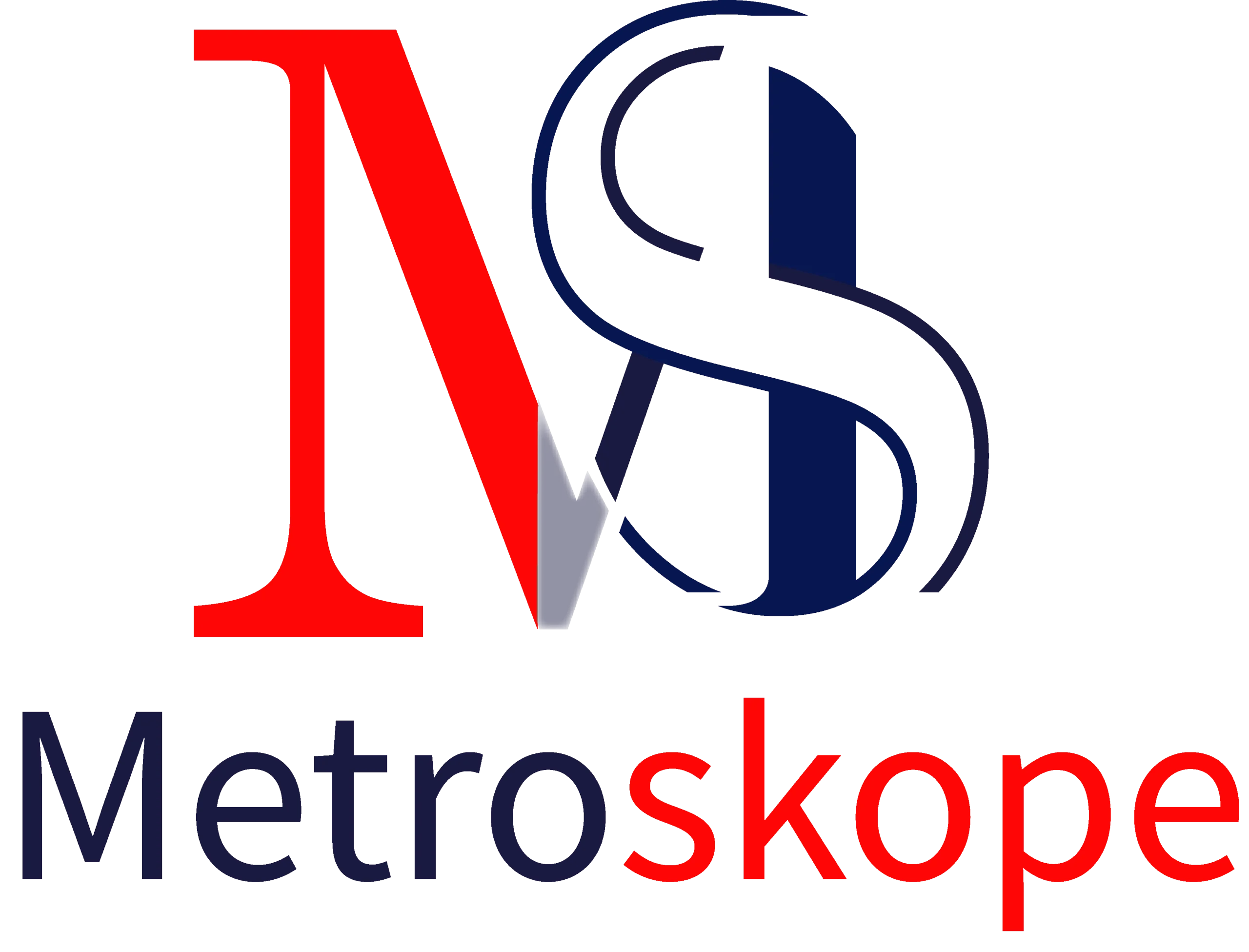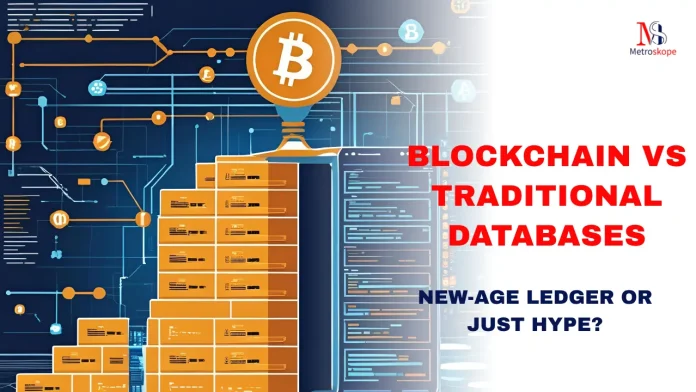Blockchain vs Traditional Databases : You’re at a party, and someone mentions blockchain. Half the room gets excited about “revolutionary technology,” while the other half rolls their eyes and mutters something about “overpriced marketing.”
Sound familiar? Welcome to the great blockchain vs traditional databases debate of 2025—where the stakes are high, the opinions are strong, and the truth is somewhere in between a Silicon Valley pitch deck and your grandfather’s filing cabinet.
The Great Database Divide
In the red corner, we have traditional databases—the reliable workhorses that have been powering everything from your bank account to your Netflix recommendations for decades.
They’re like that dependable friend who always shows up on time, remembers your birthday, and never lets you down.
In the blue corner, we have blockchain—the shiny new kid on the block (pun intended) that promises to revolutionize everything from how we store data to how we trust each other.

It’s like that exciting friend who has grand plans to change the world but sometimes forgets to show up on time.
But before we declare a winner, let’s understand what we’re actually comparing.
This isn’t just about technology—it’s about philosophy, economics, and the future of how we organize information in our digital world.
Blockchain vs Traditional Databases
Traditional Databases are centralized systems managed by a single authority, offering high speed (1M+ transactions/second), complex queries, and immediate consistency. They’re like a well-organized library with a strict librarian controlling access.
Blockchain is a decentralized network where data is distributed across multiple nodes, providing transparency, immutability, and trustless transactions. However, it’s slower (7-10,000 TPS) and consumes more energy.
Understanding the Players
Traditional Databases: The Reliable Veterans
Traditional databases are like well-organized libraries with a strict librarian in charge.
They’ve been around since the 1960s, evolving from simple file systems to sophisticated relational databases that can handle millions of transactions per second.
Key Characteristics:
- Centralized Control: One entity manages everything
- Structured Data: Information follows predefined rules
- ACID Compliance: Atomicity, Consistency, Isolation, Durability
- Mature Ecosystem: Decades of tools, expertise, and best practices
Blockchain: The Distributed Disruptor
Blockchain is like a community bulletin board where everyone keeps a copy, and changes require group consensus.
It emerged in 2008 with Bitcoin and has since evolved into a technology that promises to decentralize everything.
Key Characteristics:
- Decentralized Network: No single point of control
- Immutable Records: Once written, data cannot be changed
- Transparency: All transactions are visible to network participants
- Consensus Mechanisms: Network agrees on validity of transactions
The Architecture Showdown
Traditional Database Architecture: The Skyscraper Model
Traditional databases follow a client-server architecture—think of it as a very tall building where all the important stuff happens at the top (the server), and everyone else (clients) has to go through security to get what they need.
| Component | Function | Analogy |
|---|---|---|
| Server | Central processing unit | The CEO’s office |
| Database Administrator | Manages access and security | The security guard |
| Clients | Request and receive data | The employees |
| Storage | Centralized data warehouse | The company vault |
Blockchain Architecture: The Village Council Model
Blockchain uses a peer-to-peer distributed network—imagine a village where every citizen keeps a copy of all the important records, and major decisions require a town hall meeting.
| Component | Function | Analogy |
|---|---|---|
| Nodes | Individual computers in network | Village council members |
| Consensus Mechanism | Agreement protocol | Town hall voting |
| Blocks | Data containers | Pages in the village record book |
| Hash | Unique identifier | Tamper-proof seal |
Security: Fort Knox vs. Distributed Army

Traditional Database Security: The Fort Knox Approach
Traditional databases protect data like Fort Knox protects gold—with multiple layers of security around a central vault.
It’s incredibly secure until someone finds a way through the walls.
Security Features:
- Access Controls: Role-based permissions
- Encryption: Data protection in transit and at rest
- Backup Systems: Regular data backups
- Audit Trails: Transaction logging
Vulnerabilities:
- Single Point of Failure: If the central server is compromised, everything is at risk
- Insider Threats: Database administrators have significant power
- Centralized Attacks: Hackers only need to breach one system
Blockchain Security: The Distributed Army Approach
Blockchain protects data like a distributed army—attack one soldier, and the rest of the army is still standing.
It’s incredibly resilient but sometimes struggles with coordination.
Security Features:
- Cryptographic Hashing: Each block has a unique digital fingerprint
- Distributed Storage: Data exists across multiple nodes
- Consensus Validation: Network must agree on changes
- Immutability: Historical data cannot be altered
Vulnerabilities:
- 51% Attacks: If someone controls majority of network, they can manipulate data
- Private Key Loss: Lose your keys, lose your data
- Smart Contract Bugs: Code vulnerabilities can be exploited
Performance Battle: Speed vs. Stability
Traditional Databases: The Speed Demons
When it comes to raw performance, traditional databases are like Formula 1 cars—incredibly fast, highly optimized, and perfect for controlled environments.
Performance Metrics:
- Transaction Speed: Up to 1 million+ transactions per second
- Query Complexity: Complex SQL queries with joins and aggregations
- Latency: Near real-time responses
- Scalability: Vertical scaling (bigger servers) and horizontal scaling (more servers)
Blockchain: The Steady Marathoner
Blockchain is more like a marathon runner—not the fastest, but incredibly consistent and reliable over long distances.
Performance Metrics:
- Transaction Speed: Bitcoin (7 TPS), Ethereum (15 TPS), modern blockchains (thousands TPS)
- Query Complexity: Limited query capabilities
- Latency: Block creation time affects response speed
- Scalability: Challenging due to consensus requirements
Performance Comparison Table:
| Metric | Traditional Database | Blockchain |
|---|---|---|
| Transaction Speed | 1M+ TPS | 7-10,000 TPS |
| Query Flexibility | Highly flexible | Limited |
| Consistency | Immediate | Eventual |
| Throughput | Very high | Moderate to high |
| Latency | Milliseconds | Seconds to minutes |
Cost Analysis: Wallet Reality Check

Traditional Database Costs: The Predictable Investment
Traditional databases are like buying a house—significant upfront costs, but predictable ongoing expenses.
Cost Components:
- Hardware: Servers, storage, networking equipment
- Software: Database licenses, operating systems
- Personnel: Database administrators, developers
- Maintenance: Updates, backups, security patches
- Infrastructure: Data centers, power, cooling
Annual Cost Estimate for Enterprise:
- Small Business: $50,000 – $200,000
- Medium Business: $200,000 – $1,000,000
- Large Enterprise: $1,000,000+
Blockchain Costs: The Variable Investment
Blockchain is like investing in a startup—potentially high returns, but costs can be unpredictable.
Cost Components:
- Development: Smart contracts, dApps, integration
- Network Fees: Transaction costs, gas fees
- Energy: Proof-of-work consensus energy consumption
- Compliance: Regulatory compliance costs
- Expertise: Blockchain developers and consultants
Annual Cost Estimate for Enterprise:
- Small Implementation: $100,000 – $500,000
- Medium Implementation: $500,000 – $2,000,000
- Large Implementation: $2,000,000+
Real-World Applications: Where They Actually Work
Traditional Databases: The Workhorses
Traditional databases excel in scenarios that require speed, complexity, and immediate consistency.
Best Use Cases:
- Banking Systems: Real-time transaction processing
- E-commerce: Inventory management, order processing
- Healthcare: Patient records, appointment scheduling
- Analytics: Business intelligence, data warehousing
- Gaming: Player statistics, leaderboards
Success Stories:
- Amazon: Handles millions of transactions daily
- Google: Processes billions of search queries
- Netflix: Manages user preferences and recommendations
Blockchain: The Specialists
Blockchain shines in scenarios requiring trust, transparency, and decentralization.
Best Use Cases:
- Supply Chain: Product traceability from origin to consumer
- Digital Identity: Secure, verifiable credentials
- Smart Contracts: Automated agreement execution
- Voting Systems: Transparent, tamper-proof elections
- Intellectual Property: Timestamp proof of creation
Success Stories:
- Walmart: Food traceability using blockchain
- Estonia: Digital identity system for citizens
- De Beers: Diamond provenance tracking
The Hype Factor: Separating Gold from Glitter
The Blockchain Hype Bubble
Let’s address the elephant in the room: blockchain has been more hyped than a Marvel movie trailer.
The technology promises to solve every problem from world hunger to your morning coffee getting cold.
Hype Indicators:
- Buzzword Bingo: “Revolutionary,” “disrupting,” “paradigm shift”
- Unrealistic Promises: Blockchain for everything, including your toothbrush
- Investment Frenzies: Millions invested in concepts without proven value
- Media Attention: Every blockchain project gets coverage regardless of merit
The Reality Check
However, beneath the hype lies genuine innovation and practical applications.
The key is understanding where blockchain adds real value versus where it’s just expensive marketing.
Reality Markers:
- Proven Use Cases: Supply chain, digital identity, smart contracts
- Growing Enterprise Adoption: 83% of executives believe blockchain will significantly impact their industries
- Market Growth: Global blockchain market expected to reach $470 billion by 2030
- Regulatory Clarity: Governments developing frameworks for blockchain adoption
Future Outlook: Crystal Ball Predictions
The Convergence Theory
The future likely isn’t about choosing between blockchain and traditional databases—it’s about using them together.
Think of it as a technological marriage where each partner brings their strengths.
Hybrid Scenarios:
- Data Lakes: Traditional databases for performance-critical operations, blockchain for audit trails
- Microservices: Different services using appropriate database technologies
- Layered Architecture: Blockchain for settlement, traditional databases for transaction processing
Emerging Trends
Traditional Database Evolution:
- Edge Computing: Bringing databases closer to users
- AI Integration: Machine learning-powered query optimization
- Cloud-Native: Serverless database architectures
- Multi-Model: Supporting various data types and structures
Blockchain Evolution:
- Scalability Solutions: Layer 2 solutions, sharding, improved consensus
- Energy Efficiency: Proof-of-stake and other green consensus mechanisms
- Interoperability: Cross-chain communication protocols
- Regulatory Compliance: Built-in compliance features
The Verdict: Revolution or Evolution?

So, Is Blockchain Just Hype?
The answer is both yes and no—it depends on context. Blockchain is simultaneously:
Overhyped in that:
- It’s not a silver bullet for every problem
- Many projects are solutions looking for problems
- Implementation costs often exceed benefits
- Performance limitations make it unsuitable for many use cases
Undervalued in that:
- It solves real problems in trust and transparency
- It enables new business models impossible with traditional systems
- It provides value in scenarios requiring decentralization
- It’s driving innovation in cryptography and distributed systems
The Practical Recommendation
Choose your database technology like you choose your vehicle—based on your specific needs, not on what’s trending
Choose Traditional Databases When:
- You need high-performance, complex queries
- Data consistency is critical
- You have predictable scaling requirements
- Cost optimization is important
- You need mature tooling and expertise
Choose Blockchain When:
- You need trustless transactions between parties
- Transparency and auditability are crucial
- You’re building decentralized applications
- You need tamper-proof records
- You want to eliminate intermediaries
The Future is Hybrid
The most successful organizations will likely use both technologies strategically:
| Use Case | Traditional Database | Blockchain | Hybrid Approach |
|---|---|---|---|
| Financial Trading | Order matching | Settlement | Both |
| Supply Chain | Inventory management | Provenance tracking | Both |
| Healthcare | Patient records | Consent management | Both |
| Gaming | Player statistics | Asset ownership | Both |
The Plot Twist
Here’s the plot twist: the blockchain vs traditional databases debate isn’t really about technology—it’s about trust, control, and the future of how we organize society.
Traditional databases represent the old world of centralized authority and optimized efficiency. They’re like the reliable family sedan—not flashy, but they get you where you need to go safely and economically.
Blockchain represents the new world of distributed trust and transparency. It’s like an electric vehicle—promising, environmentally conscious, but still figuring out the infrastructure.
The reality is that both technologies will coexist, each serving different needs in our increasingly digital world. The key is understanding when to use each tool and how to combine them effectively.
So the next time someone asks you whether blockchain is revolutionary or just hype, you can confidently answer: “Yes, it’s both—and that’s exactly why it’s interesting.”
After all, the best technologies are often the ones that are simultaneously overhyped and undervalued, creating opportunities for those who understand the difference between marketing and reality.

